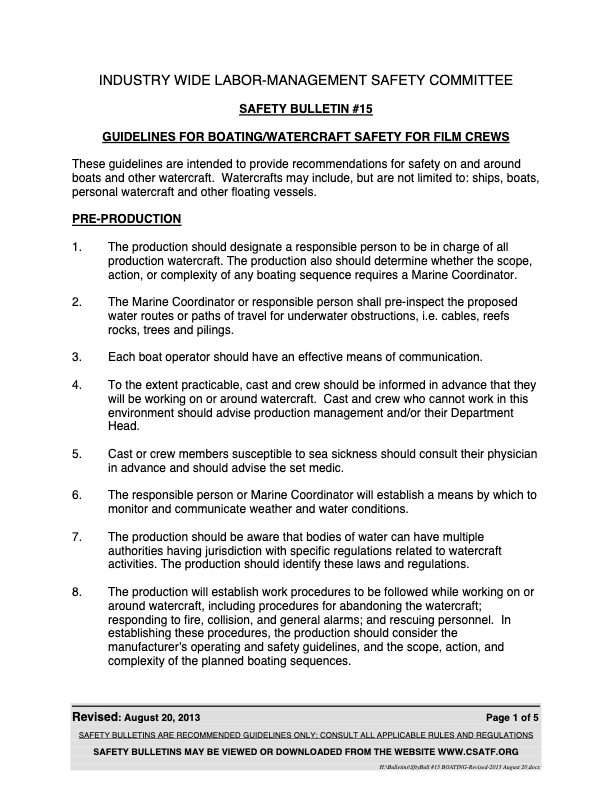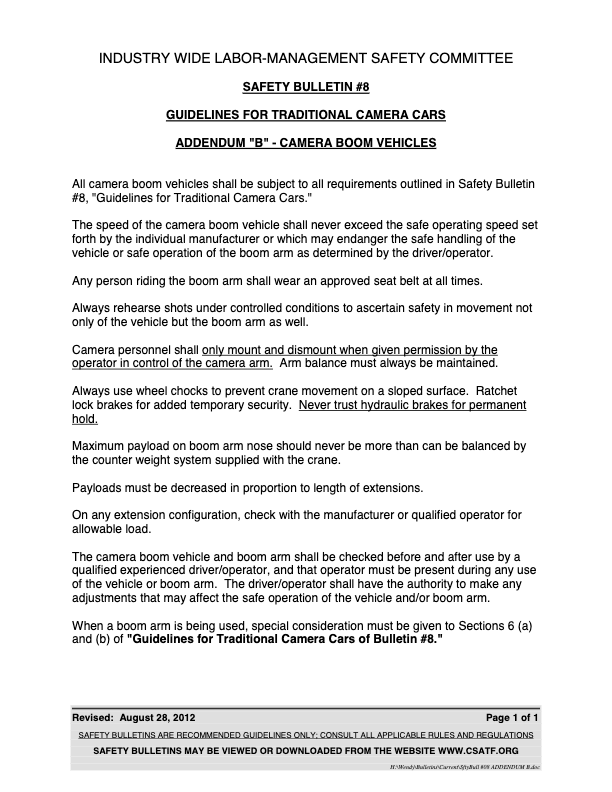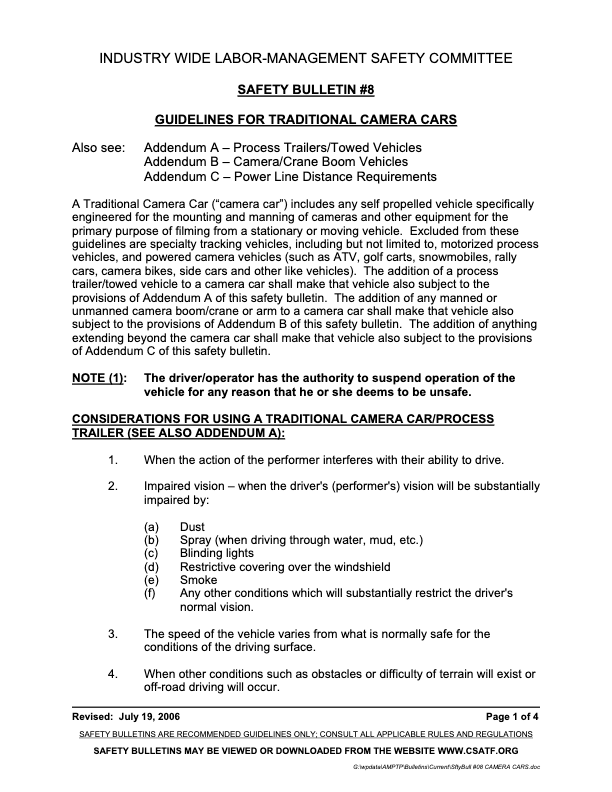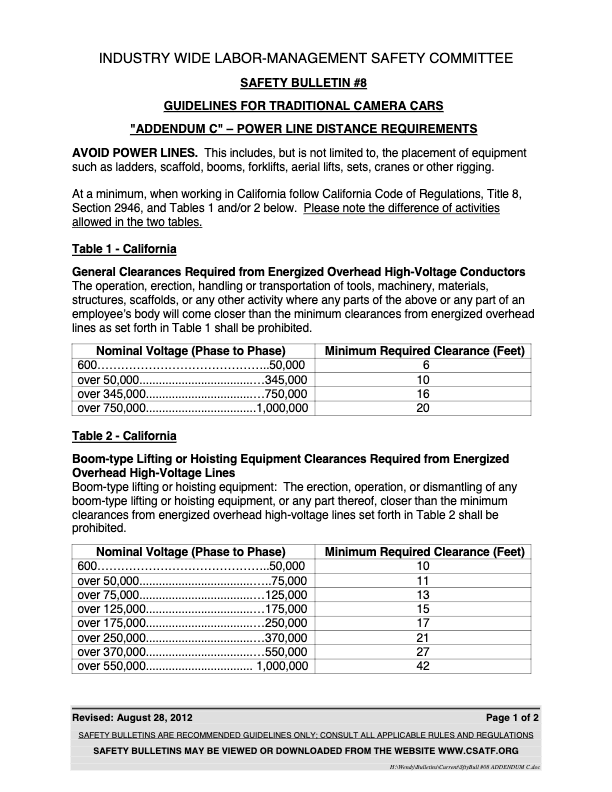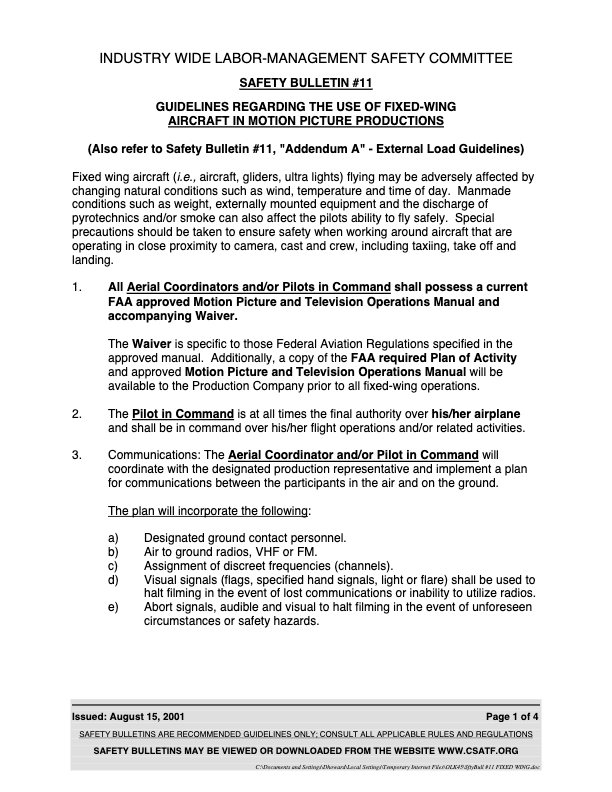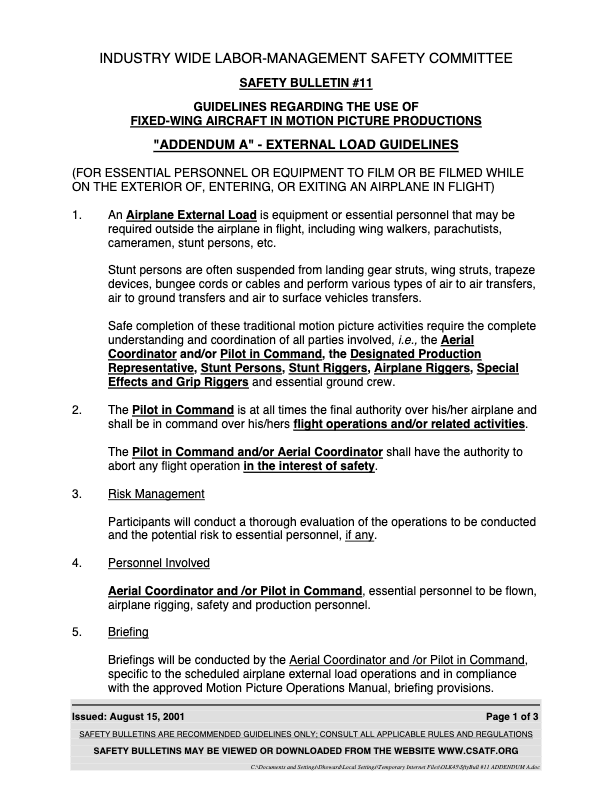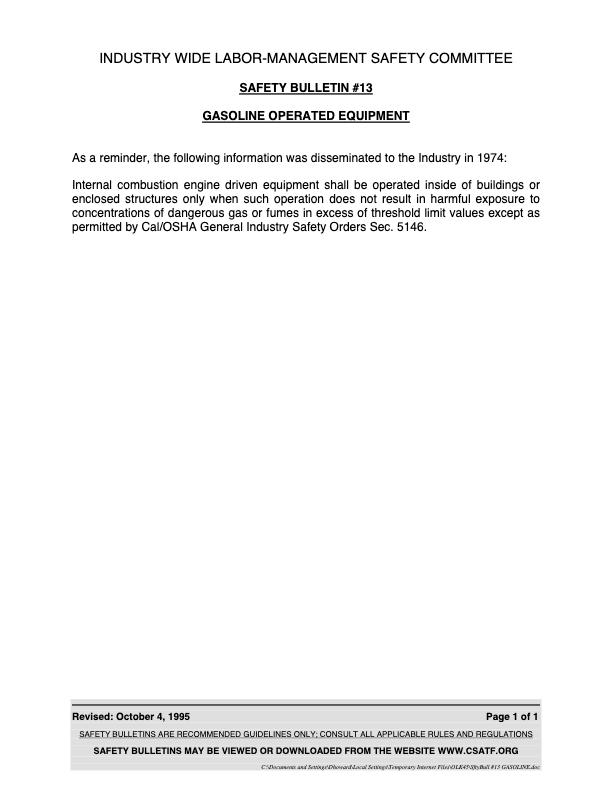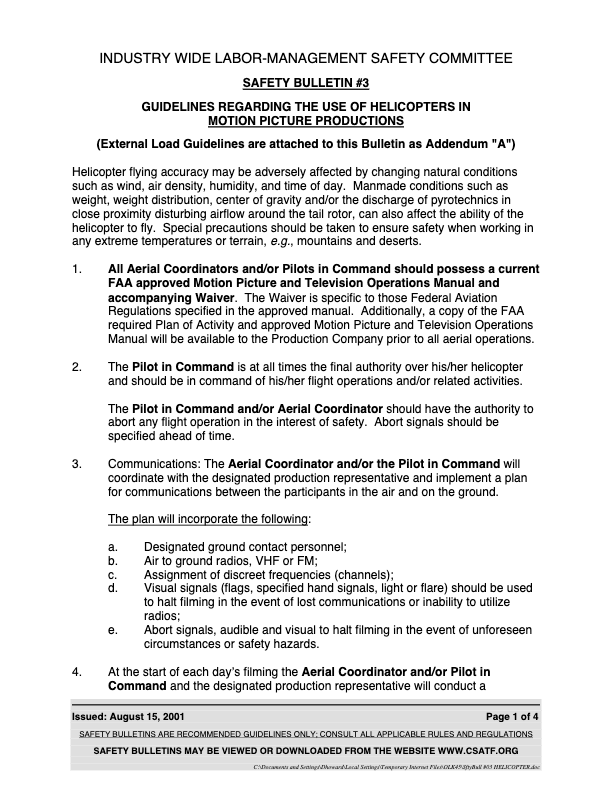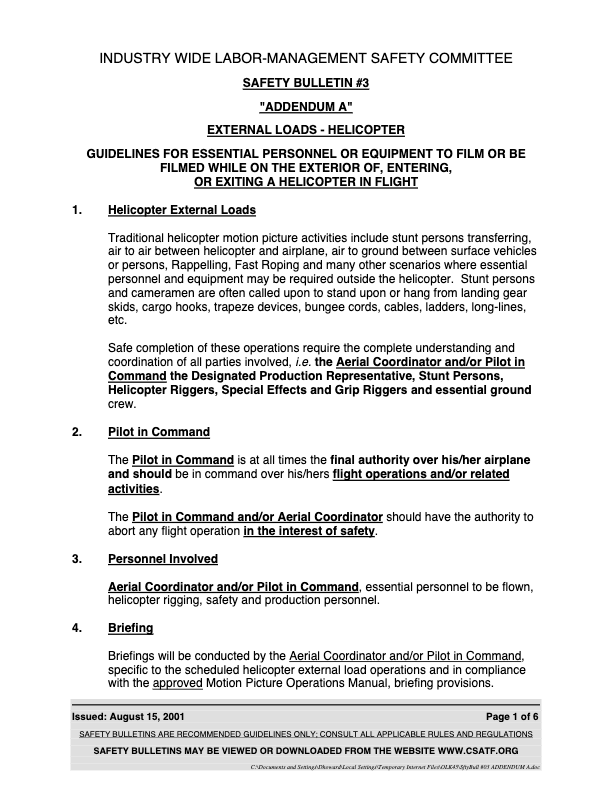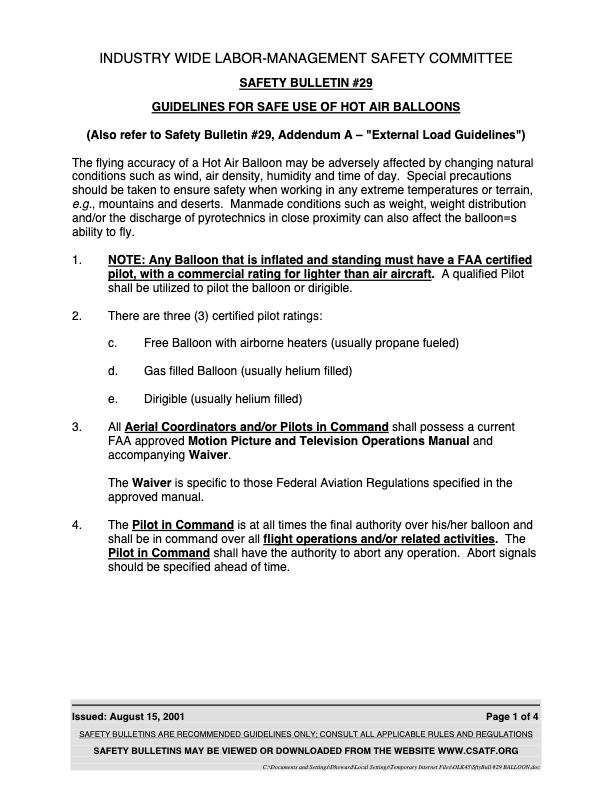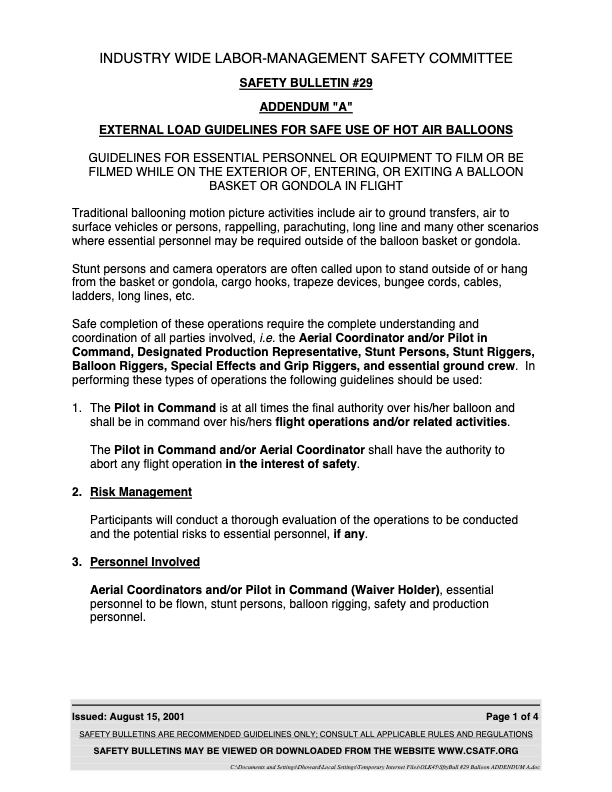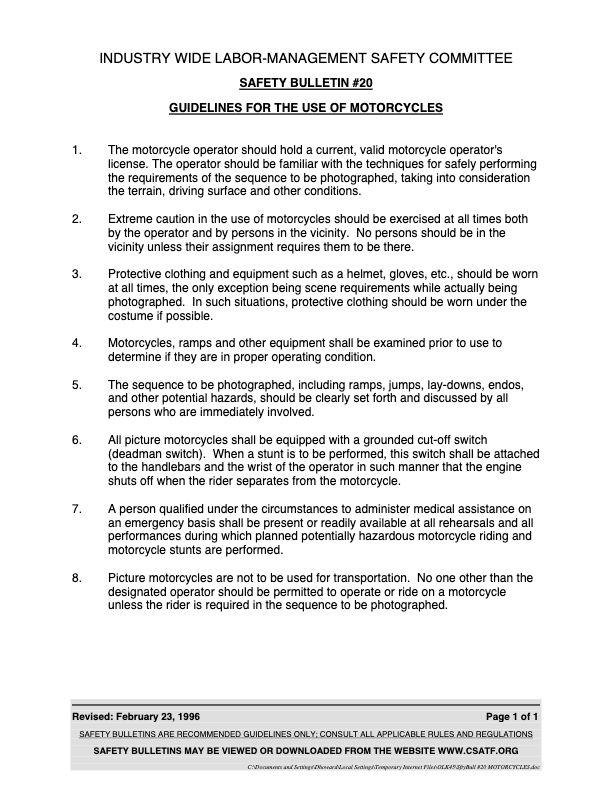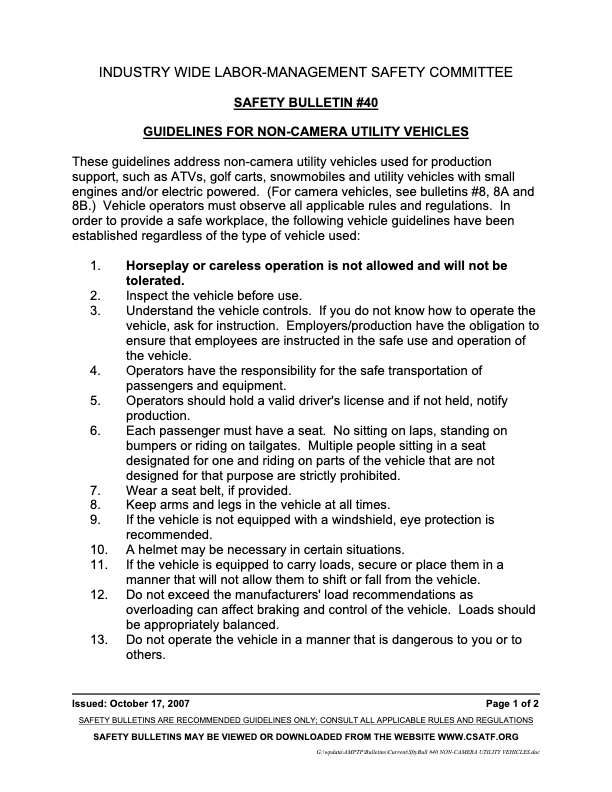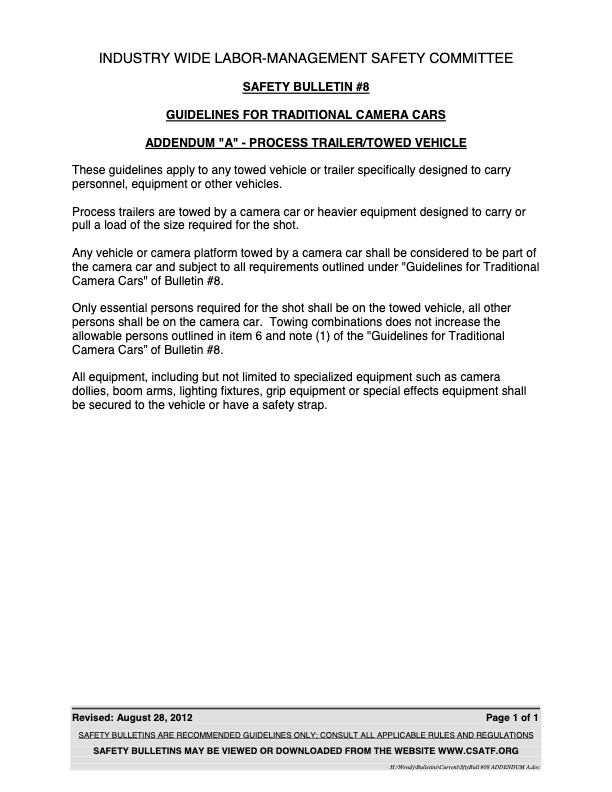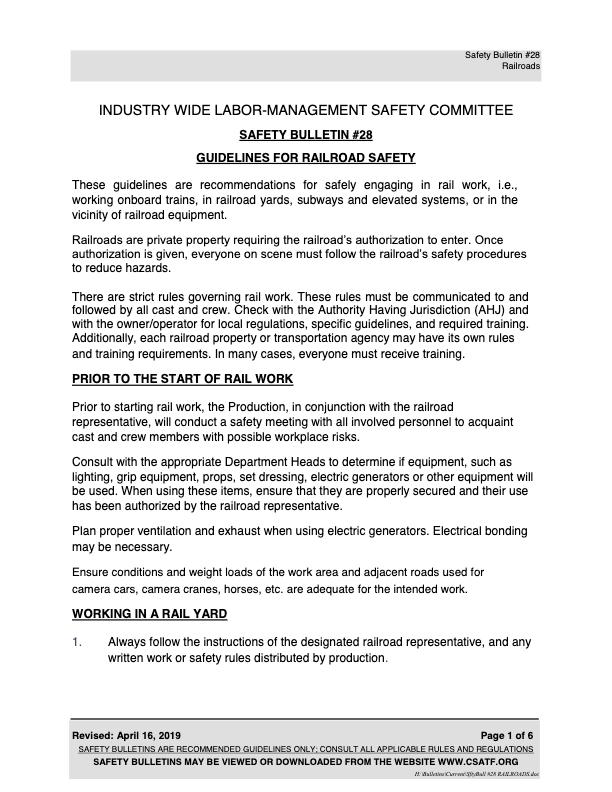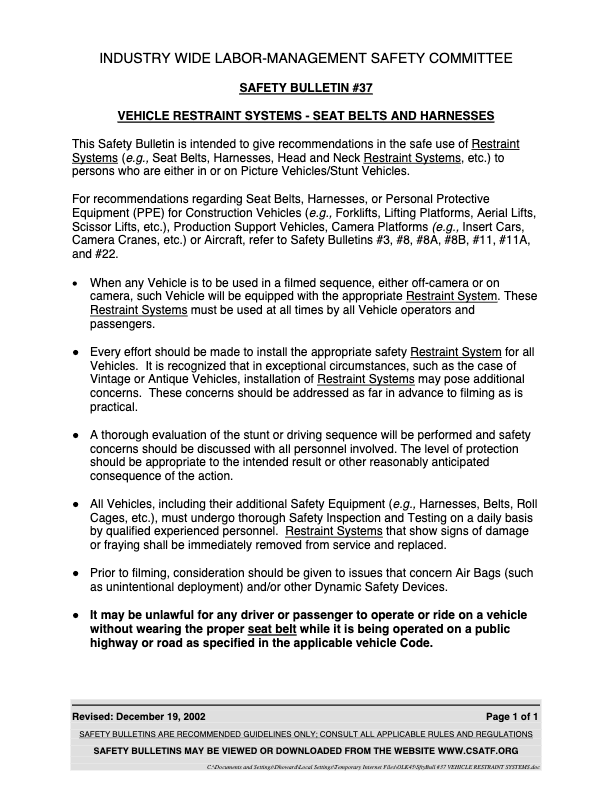Safety Bulletin

Guidelines
These guidelines are intended to give recommendations for safely working on and around Alternative Driving Systems (ADS) e.g., Pods. An ADS is typically a custom‐built device that is connected to the vehicle so that the vehicle can be driven safely without the person sitting in the normal driving position controlling the steering, accelerator, brakes, or other components. This Safety Bulletin does not address the use of wireless‐controlled vehicle systems.
ADS should only be operated to the levels for which they are designed based upon the requirements and conditions discussed between the Production and the ADS manufacturer or fabricator. The design, fabrication, and assembly of ADS are not covered in this Safety Bulletin.
Responsible Person
Production shall assign a Responsible Person or Persons. A Responsible Person is someone with both the experience and training to recognize and resolve problems relating to the configuration and operation of the ADS. The Responsible Person will have authority over all ADS operations.
Considerations for Using an ADS
- Type of vehicle to which the ADS will be installed
- Intended speed and maneuvers
- ADS rigged vehicle operating in close proximity to other vehicles
- Aircraft flown in close proximity
- Scene action (e.g., stunts, performance, and special effects)
- Route conditions (e.g., curved, incline, crown, obstacles, clearances, length, width, paved, gravel, dirt, flat, hilly, wet, or slippery)
- Anticipated weather
- Evaluation of the vehicle’s original systems and whether they should be disengaged (e.g., brakes, ignition, airbags, steering, and accelerator)
- A secure area for cast and crew riding in or on the ADS vehicle
- Load capacity, center of gravity, and counter‐balance
- Equipment weight, placement and use (e.g., camera, lighting, and props)
- Visibility conditions of ADS operator such as dust, spray, blinding lights, restrictive covering over the windshield, smoke
- Emergency stop system
- Communication system
- Allowing time for proving/testing the system
Pre‐Rig
The capabilities and limitations of the ADS should be communicated to all applicable departments. All rigging of the ADS and equipment, including cameras and lights, is to be performed by qualified personnel in an area secured for the purpose of rigging, which is free of known hazards, including other vehicular traffic. The rigging must be discussed with the Responsible Person and the ADS operator prior to the use of the vehicle. The Responsible Person and ADS operator must inspect the vehicle after any rigging change is made to ensure that the change will not adversely affect the safe operation of the vehicle. Only authorized persons should be in the secured area. When the ADS vehicle is not in operation, steps should be taken to ensure the vehicle cannot inadvertently move.
Inspection
The connected vehicle must be inspected before and after each run. Inspection items include, but are not limited to, the ADS, brakes, steering, tires, engine, drive train, vehicle’s electrical system, connection points, towing equipment, and all safety equipment. Any items not fully functioning must be repaired by a qualified person before use.
Prior to Operation
A walk through with the performer(s) should be conducted regarding which of the vehicle’s original systems are operational and which have been disengaged.
A rehearsal should be considered to familiarize the performer with the operational characteristics of the vehicle and controls.
Safety Meetings
A shot‐specific safety meeting should be held by the First Assistant Director, Responsible Person, and Stunt Coordinator, as needed, involving all personnel riding in, on, or in close proximity (e.g., stunt personnel or background performers) to the ADS vehicle. This meeting should discuss the following topics below:
- Shot sequence and route (e.g., stunt action including crossovers/head‐on or near misses, vehicle speed, number and proximity of other vehicles, crew and camera placement, background performers, and property)
- Walk‐through or dry‐run
- Environmental conditions (e.g., weather, surface conditions, such as cement, gravel or dirt, topography, such as flat or hilly)
- Possible changes due to hazards
- Authority to abort including signals to be used
- Route conditions (e.g., slope, curved, incline, crown, obstacles, clearances, length and width)
- Equipment considerations (e.g., rigging, exposed controls, drive systems, air bags, automatic roll bar, and fuel‐cell position)
- Communication systems (e.g., intercom and designated channel)
- Signaling system to alert personnel to the ADS impending movement
- Visibility
- Special effects
- Personal protective equipment (e.g., harnesses, seat belts, helmets, and eye protection)
- Traffic and pedestrian control (e.g., street closures and Intermittent Traffic Control (ITC))
- Emergency plan (e.g., escape routes and contingency plan)
If for any reason there is a change in the choreography or personnel involved in the shot, a safety meeting must be held with all personnel involved to ensure everyone understands the changes.
Operation
During rehearsals and takes:
- The Responsible Person and/or the ADS Operator has the authority to suspend operation of the ADS vehicle, including the ability to abort
- Changes should be approved by the Responsible Person and/or ADS Operator
- The ADS vehicle and equipment should be inspected after each run
- Do not approach, enter, or exit the ADS without permission from the Responsible Person, First Assistant Director, or ADS Operator
- Only essential personnel required for the shot should be allowed on or in the ADS vehicle
- Cast and crew riding on or in the ADS vehicle must be provided a safe and secure place to ride

